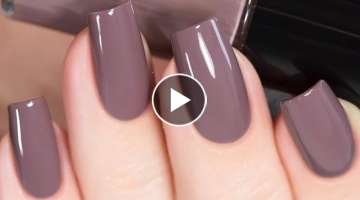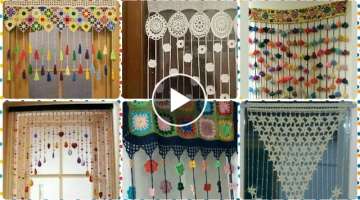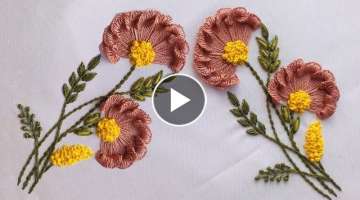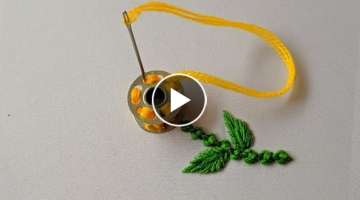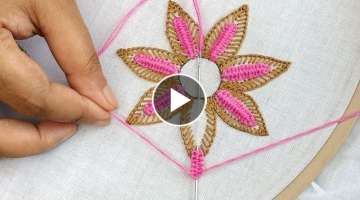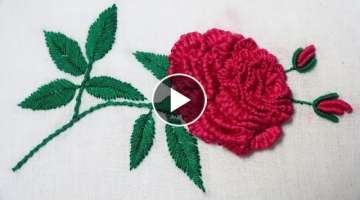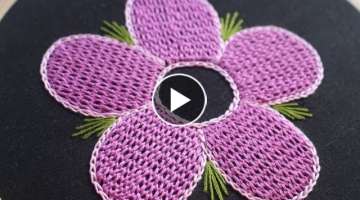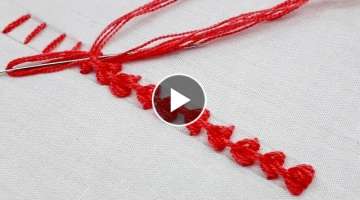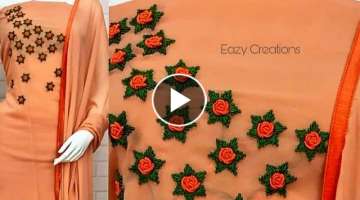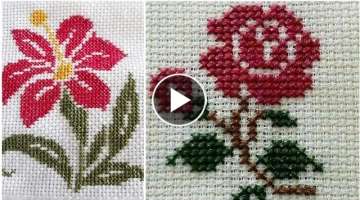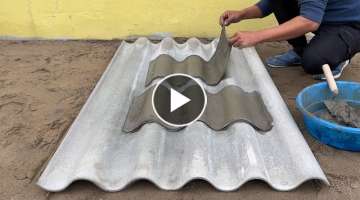Bullion knot stitch for beautiful flower design | Hand Embroidery Designs
Bullion knot stitch for beautiful flower design | Hand Embroidery Designs https://youtu.be/ZOZwrFa_q2U
Although embroidery doesn't have to be an expensive hobby, for those of us who get serious about our crafting there are certain techniques and equipment which help us embroider faster or fancier.
Laying Tools. When you work with multiple plies on a single needle, you'll need to keep the threads parallel, not twisted, as you stitch. (This is called "laying" the thread.) A variety of laying tools will help you achieve this. The simplest is a large tapestry needle or bodkin. Others specifically designed as laying tools include a stroking tool (also known as a tekobari); one end resembles an awl or stiletto, and the other end is square to prevent it from slipping from your fingers. A trolley needle has a point like a tapestry needle affixed to a metal band that fits on the end of your finger.
Pincushions. Pincushions are useful for stowing threaded needles if you must change colors often. Pincushions come in a variety of sizes and styles; select one that fits in your stitching bag or basket. Many stitchers like to make their own personalized models.
Many manufactured pincushions come with an emery, which looks like a very small pincushion filled with a gritty, sand-like material which keeps needles clean and sharp.
Needlebook or Needlecase. With "pages" of soft fabric, a needlebook keeps your pins and needles protected (and protects you from the needles, too) and organized. Each "open page" is designed to store a particular needle type in a range of sizes. As with pincushions, this is an item you can make yourself to show off your stitching talents.
Many stitchers like to store their needles in needlecases, which may be narrow and cylindrical or large and box-like; some of the latter have magnets to keep needles in place.
Thread Palette. These plastic wood or paper palettes have a series of holes along the edges to hold individual colors of threads, which you attach using half-hitch knots.
Thread Organizer. There are many products on the market for storing and identifying threads you accumulate. One of the simplest is small individual plastic bags held together on a metal binder ring. Storage boxes such as those used for hardware and fishing lurs work well for thread wound on bobbins. On the other end are wooden boxes or chests that resemble fine furniture.
Ruler and Tape Measure. Clear plastic rulers calibrated in inches are invaluable and come in a 6" length that fits easily into a stitching bag. For measuring a larger area, a tape measure is useful and takes up little space.
Thumbtacks and Tack Puller. Use these to attach fabric to stretcher bars. (Don't use staples to attach embroidery fabric; you'll risk pulling one of the fine threads and spoiling the appearance of the fabric.
For very fine work you may want to use a lamp that has a magnifier attached. Other possibilities include magnifiers that hang around the neck, attach to your eyeglasses, or are worn atop the head.
Embellishments. Small, decorative accents give your embroidery beauty, whimsy, and individuality. Look for buttons, beads, and charms at your local needlework shop, catalogs, consumer shows or online. Find them also in embroidery kits, often as the focus of a design theme.
Article Source: [http://EzineArticles.com/?Embroidery-Tools-and-Equipment&id=4366145] Embroidery Tools and Equipment
Follow us:
FaceBook: https://www.facebook.com/Creativestitches
Twitter: https://twitter.com/flower_stitch
Google+: https://plus.google.com/u/0/b/117507621859835144033/+StichandFlower
Pinterest: https://www.pinterest.com/tuhin_designer/hand-work

Video
Share
Facebook Comments

